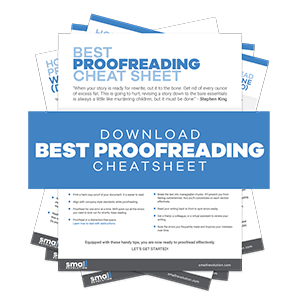In an age where TikTok and Youtube usage is rife, who still uses emails? You’d be surprised to know that in the world of marketing, email usage is a crucial channel.
For emails to succeed in communicating a brand’s message and convert potential clients into actual ones, creativity in the words is crucial. Here’s where email copywriting comes in.
Great email copywriting doesn’t just appear from thin air. It takes training, writing, making mistakes, and trying all over again until you perfect it. Enrolling in copywriting courses from Small Revolution should be your first baby step.
As an email copywriter, how do you go about writing impeccably? How do you ensure yours don’t land in the trash unopened? Keep in mind that there are over 4 billion email users.
Here are our 4 top email copywriting tips.
Understand Your Target Audience’s Needs
Who are you targeting? Do you have a buyer persona in mind? Anticipate their needs and provide solutions in your copy.
Understanding your target audience when copywriting narrows your focus to those you can appeal to, hence gives you a higher return on investment (ROI) in the long run.
4 Ways You Can Use to Find Your Target Audience
- For an established business, do this by using client data to identify their needs. You can obtain data from polls, questionnaires, surveys, Google Analytics, or booking details.
- A great marketing tool at your disposal is the a/b testing technique. A test of this design helps you try out different versions of your email copy on potential clients to identify the best-performing one. Once you have the winning copy, use it to generate conversions. Running such tests enables you to narrow down what works and what doesn’t.
- Use your clients’ direct competitor’s target audience. Most likely, these competitors serve a similar target audience. When you find out what they like, you can include those strategies in your email marketing content to appeal to them.
- Provide incentives for potential readers. Offer free newsletters, guaranteed subscription spots, and discounts. Fulfill any promise you make to your audience, creating a symbiotic relationship whereby your readers feel that you are not just in it for their money or time. A great example is this one from Snowe.
Offer Valuable Subject Lines
Effective email marketing doesn’t mean you have to be over-the-top salesy. In fact, your prospective clients will avoid you like a plague when they sniff any salesy, click-baity and spammy language akin to marketing.
That aside, you can confidently close a sale, subscription, or get conversions by making the emails’ subject lines valuable. What is a good email subject line?
5 Subject Line Best Practices to Remember
- Avoid long sentences. Keep the subject line short. To achieve this, use powerful words in the headline that directly convey the message you want to get across. Effective subject lines range from 40 to 60 characters.
- Pique your audience’s curiosity using teaser lines, questions, and actionable steps in the email subject headline. For example, a subject line like ‘Create your meal plan with our template’, allows the readers to take action themselves.
- Use humor. When was the last time you burst out laughing when you opened your inbox? See? As an email copywriter, you don’t have to lull anyone to sleep by using the usual marketing jargon. Being humorous in email marketing is no easy feat, but a little effort won’t hurt when used on a subject line.There’s a fine line between relevant humor and something that could be misunderstood. Be extra careful when going this route, however, if done well, you’ll increase email open rates immensely.
- Include a sense of urgency. Give the reader limited time to take things seriously. As you write email copy, include phrases like compelling, join us now, or last call to evoke this feeling of urgency. Chubbies did this well for a recent sale.
- To stand out in email copywriting, use specific numbers instead of general ones. For example, 1,299 is a more specific number compared to 1,000. Techniques like this elicit interest and readers want to know what it’s all about.
Write for Fellow Humans, Not Robots
Email copywriting is not so much different from writing a blog post. The end goal in both is the same, to influence the audience to take action.
Nonetheless, email marketing is not just about compelling prospective buyers with a call to action (CTA) slogan.
First and foremost, establish a friendly atmosphere between you and your audience. Friendliness should flow through in your email copywriting right from the subject line to the body.
Here are simple ways to achieve this:
Use a Conversational, Friendly Tone
When talking to your spouse, child, friend, or colleague, do you shout at them or use military-style commands? We don’t think so. Email copywriting shouldn’t be any different.
Share your own relatable stories or lessons learned. As an email copywriter, write just as you would talk.
Clients want to know they can resonate with you. Connections build trust and hopefully, increased clicks and conversions.
Here is a brief comparison between formal and conversational tones.
| Conversational, Friendly Tone | Formal Tone |
| Hey there, Anne! | To whom it may concern |
| 5 things you didn’t know about… | According to the data on… |
| What do you think? Write to us. | Confirm your understanding in writing. |
Customize Your Email Marketing Copy

Curating personalized email copy usually takes time. However, it’s worth it. Once you perfect this, you can use targeted emails as a campaign tool to reach specific clients.
Always use clients’ names on emails, for greetings, throughout where appropriate, and when signing off.
How do you usually feel whenever you open an email addressing you by your name? Your face lights up or you possibly even blush! That’s the same reaction all readers should have.
Take a look at this inbox from Rent the Runway. They even know their client’s birthday!
Edit Your Email Copy
Even for the most experienced copywriters, formatting mistakes tend to creep in once in a while, and may easily slip under our radar in the writing process.
To minimize this, edit, edit, and edit some more!
Here are three pointers to remember.
Use Brief Paragraphs
Never leave any hanging, fill-in-for-yourself sections. Avoid any forms of generalization, which hinder customer relations. Your email marketing content is not for every Tom, Dick, or Jane, it’s for a specific client in need of what you have to offer.
Offer crystal clear details, not only in the subject lines but in the entire email copy.
Use the active voice which demonstrates credibility. Take a look at these simple active versus passive voice examples.
| Active Voice | Passive Voice |
| We made a mistake with your payment details. | A mistake was made with your payment details. |
| Inbox me asap if you have any doubts | If there are any doubts, we can be reached via email. |
Brevity also applies to your call to action section. You don’t want to sound nagging, but at the same time, you want your audience to take action, albeit subtly.
Proofread Your Content
Just as you would proofread a blog post, similarly, do the same for email copy.
Correct any punctuation, grammar, and sentence structure mistakes. Read it out aloud, you’ll be surprised how many sentences you’ll need to correct.
You can imagine your potential clients stumbling upon numerous errors in a single email. They could think that your products or services are defective too!
Optimize Your Content for Mobile Devices
Mobile device audiences are usually overlooked, not only in email copywriting, but in other forms of copy too.
Never assume that everyone has a desktop. Effective email copy should be accessible on numerous devices such as mobile phones, tablets, and PCs.
In addition, the content format should be compatible with multiple operating systems such as macOS, iOS, Android, and Windows.
3 Types of Email Copy You Can Write
Email Newsletters
These are informational emails that keep readers up to date on products, services, or company news.
As a brand or copywriter, use newsletters to provide tips, updates, changes of terms and conditions as well as any upcoming events.
When writing email newsletters, make it all about the brand. Incorporate brand colors, logo, infographics, and relevant data that appeals to your audience.
Don’t go overboard with graphics, though, complicated designs that take long to load and open can put you on the losing end. Readers want emails that load quickly.
Email Courses
With a boom in online courses, there are plenty of avenues to offer them from. One such way is through email.
Writing email courses is effective if you have a list of potential students.
Start by building the email list. From there, you can introduce the courses by giving free perks such as free downloadable PDFs of selected lessons.
Product Catalogs, Updates and Follow-up Emails
Writing product catalogs and updates via email also requires competent copywriting skills.
You want to keep customers and subscribers in the loop on new developments regarding available products and services. For example, new products create the need for updated email catalogs, building continuous product awareness and customer loyalty.
Which Email Copywriting Tips Will You Try Out?
Stand out as a copywriter by getting into the mind of your audience and anticipating their needs beforehand.
Understanding your audience’s needs sets you up for successful brand campaign strategies to incorporate in your email copywriting.
For these and more tips to excel as a copywriter, join our Small Revolution copywriting course; we’d be thrilled to train you.

